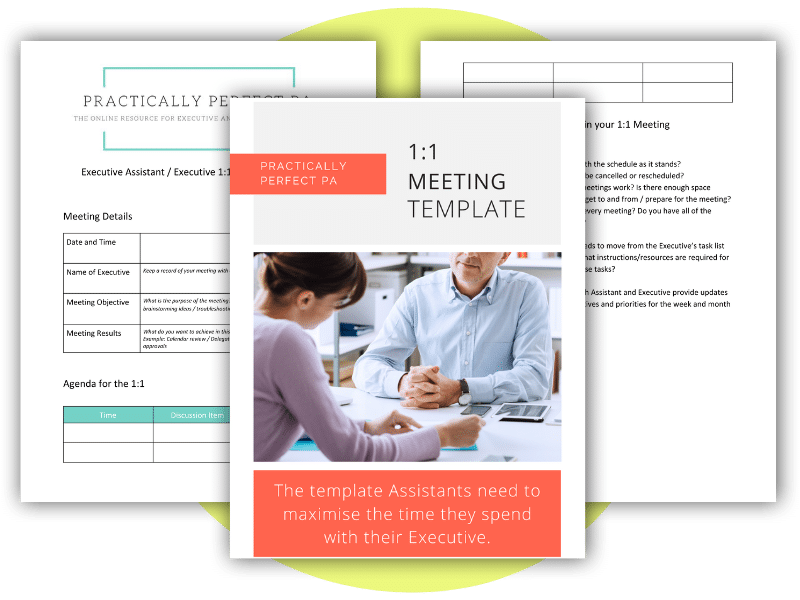What you need to know when working with a C-Suite Executive
In this article, we will cover the information you need to be aware of to be on the same page as your C-Suite Executive and work in sync together.
It certainly makes it easier to form a solid strategic partnership if you use the same language as your Executive and understand what they are working on daily and what is motivating them and the organisation at large.
We are going to cover two key areas.
- Business language – what is your Executive talking about?
- Goals and objectives – what is your Executive working towards?
Before we dive in, I want to share a quick quote from Seth Godin’ Not adding value is the same as taking it away’.
I think this quote quickly sums up how important it is for Assistants to add value – it is crucial, now more than ever, that we show our Executives and our organisations what we can do and where we can add value.
Business Language
The first topic I want to cover is business language. What your Executive is talking about? This differs from industry to industry and organisation to organisation. Still, Assistants must understand the language spoken in the office and, more importantly, by your Executive. It is crucial for what you need to know when working with a C-Suite Executive.
I know this can be difficult, particularly for those who work in technical businesses with many acronyms and jargon. First, let’s cover the type of conversations that your Executive might have and the information you need to get to grips with. I will then share a few tips on getting used to talking your business’s language.
There are four significant areas that Assistants should get to grips with when understanding what is going on with your Executive.
- Customers
- Products
- Finances and making a profit
- Growth
Who are your customers, and how does your Executive interact with them?
If you work for a board-level Executive, they will interact with customers a lot, which will be a fundamental part of their role. If you work for Departmental heads or team leaders, they may interact less frequently with customers. However, it is still essential to know the customers, where your team or department fits into the buying process, and how your organisation serves your customers.
To find all of this information about your organisation, you will probably need to be proactive in finding the information you need to get to grips with your organisation’s work.
Much of the data can be found on your company website, but it will involve asking questions and proactively seeking answers. When it comes to an understanding who your customers are, how your Executive interacts with them and lastly, how you can best serve them – you’ll have to ask some questions. Here are a few to get started:
- Who are our most important customers, and how do we serve them?
- Do we have buying personas for our customers?
- What problems do they have, and how do we solve them?
These three questions will help you understand who the customers are and why they buy from your organisation.
Here are a few more questions to ask yourself and your Executive or seek out the answers for yourself
- How does your Executive serve the organisation’s customers?
- How does your Executive’s work impact your customers and their experience with your organisation?
- Does your Executive have objectives that directly relate to your customer’s experience – if so, what are they?
These questions will give you a good sense of how much your work and your Executives impact your customers. Lastly, most organisations will have data to measure their clients’ happiness and the turnover rate (or churn). Again, this is worth knowing because it indicates how well your organisation is doing and its growth.
What products or services your organisation offers, and how does your Executive interact with the products and services – do they generate profit for your business?
When understanding your organisation’s products and services, you will probably have to review your organisation’s website to get an overview. If you work in a large global organisation, there will be many products and services, so start with your part of the business and work your way out. You must deeply understand the product or service your team offers and then have a broader understanding of the other products and services.
If you work for an internally focused department that supports the business, look at how your organisation does that and the services they offer to their key stakeholders – who will be other employees within the company.
So how do you understand the services that your organisation offers? Once you understand what they are, the next step is to know how they work. Again, you have to be proactive, ask questions and seek answers.
Many organisations will hold internal training for sales staff because they need to understand the products and services truly. Can you ask to sit in on a training session? Can you sit down with the Head of Sales for half an hour and get them to explain the product or service to you as though they were selling it to you? Does your organisation have demo videos you could watch or any sales collateral you could read through?
Again, this is not easy if you work in a very technical industry, but it will help you develop your business understanding, which is vital. It will help you understand what your organisation fundamentally does and why it does it -what problems does your organisation solve with its products and services?
Lastly, how does your Executive interact with the products and services offered by your organisation? Are they building the product, are they selling it, do they market it, do they make sure it works safely? Where in the product or service journey do your Executive and their team sit?
How does your organisation make its profit, and how does your Executive impact the bottom line?
So again, you must understand how your business makes a profit and what the profit is.
This is for two reasons firstly, it helps if you know where your organisation is growing and how they do that, and secondly, if they are not increasing and increasing their profits, why not? When you have those conversations with your Executive during your yearly review, you want to know if the business is doing well.
Often employees will be told they are not getting a bonus or a pay rise because ‘the business isn’t doing well’. If you understand the business’s finances, you’ll know whether this is accurate.
So how do you understand the finances of the business? Here are the documents you need to read to get yourself up to speed:
- Vision / Mission statements
- Growth strategies
- Goals and objectives
- Executive summaries
- SWOT analysis
- Key Performance Indicators
- Customer profiles
- Industry analysis
- Marketing plans
- Organisational charts and structures
- Annual Report
I’ve left the annual report to last, as this is probably the most helpful document you can read. Most public organisations must produce an annual report detailing their financial performance every year. The information will show the business’s profit and loss, but it will also usually have a narrative explaining the financial position. As the annual report goes out to all stakeholders and clients, you must read this every year.
Try also to gain an understanding of how your organisation makes money. As an Assistant, you can access information showing you how your organisation makes money.
You have to find out how your Executive work and, in turn, your work impacts the organisation’s financials. Do they have a direct impact on the bottom line of the organisation? Does their work win customers and increase sales? Or is it more complex?
Talking this through with your Executive will help you understand your work’s purpose and the value you both bring to the organisation.
Getting to the top of the industry will be the ultimate strategy for your organisation, so it is essential to understand how they plan to do that and, if they are already at the top, how they plan to stay there! So my last fundamental is growth.
Your organisation and its leaders will have a growth strategy, which you must understand.
How is your organisation going to achieve growth? It usually falls into these areas:
- Joint Venture
- Licensing
- New Markets
- New product development
- Outside Financing
- Acquired
And these are the metrics used to measure growth typically:
- Revenue
- Sales
- Company value
- Profits
- Number of employees
- Number of customers
Again having a sense of where your organisation is going in terms of growth will help you understand the strategy and what is pushing the business forward – in other words, the organisation’s vision.
So I think we have covered the business fundamentals and language you need to grasp when working with your Executive. I want to touch on learning the language.
Firstly, does your organisation have an acronym dictionary? Many highly technical businesses have a document that employees can refer to when understanding the office jargon. If not, maybe that is a project you could initiate.
It helps to attend meetings with your Executive and engage with your colleagues on collaboration tools and platforms they use to collaborate.
But ultimately, it is about asking questions and seeking answers. Find out what this stuff means because you need to know so that you are adding value.
Let’s understand your Executive’s objectives and support their priorities.
Goals and objectives
Before we move into the nitty-gritty of objectives and goals, the first aspect of understanding your Executive’s objectives is taking a step back and understanding the person and what motivates them.
Why do they do what they do, and what motivates them? I’ve mentioned this quite a bit over the years. Still, it is worth asking if your Executive has completed personality preference tests like Meyers Briggs or a DISC assessment. If they have, ask them to look at the results to see what motivates them and how you can collaborate with them more effectively.
Once you understand what motivates them and why they do what they do, you can understand your Executive’s work and how you can support their goals.
All Assistants should know their Executive’s goals, objectives, and desired outcomes. If you aren’t clear on those things, now’s the time to schedule a one-on-one meeting to fix that. Why? Because everything you do is directly tied to that. Understanding their goals will show how your work ties into the organisation’s success.
So, for example, your objectives should be aligned with their objectives. If they have a strategic goal, something like ‘increase awareness of brand x’, you should have a practical objective, like ‘organise a launch party for brand x.’
This leads to my next point – understanding priorities.
If you know the areas your Executive will focus on for the rest of this year. You can prioritise your workload so that tasks relating to these areas are completed first.
You can also prioritise meetings, tasks and emails relating to these critical areas. Again if you know what is vital to your Executive, you can use this information to enhance your strategic time management.
Lastly, it is essential to understand how your Executive wants to grow and their personal objectives for their career and role in the organisation.
So now that you have oversight of your Executive’s objectives, how do you work together to ensure the goals and objectives are met?
Look at the following:
- Tasks: What tasks will you need to perform to drive those goals forward?
- Obstacles/Risks: What potential obstacles could stand in your way of success? How will you pivot to overcome them?
- Measurements: How will you be able to tell your efforts were successful?
As you work together to move the goals and objectives forward, always return to these three key points. This will help you stay on track and make the goals a reality.
Overall, it’s clear that a strong understanding of the language used in business and an awareness of the goals and objectives your C-suite Executive pursues will help you make an impact as their Assistant.
By being able to easily read and understand these terms, providing helpful insights, being a trusted partner and part of their strategic team, and sharing ideas meaningfully – the list is nearly endless! Becoming a successful strategic partner requires knowledge, adaptability, and effort. Unlocking this potential is the key to success for any Assistant. That said, by enrolling on our Strategic Business Partner Online Course today, you can evolve your abilities swiftly, allowing you to keep up with the dynamic corporate world and making sure that you are well-equipped to create an even more significant impact on both your professional career as well as the organisation itself. Interested? Act now, so you don’t miss out!





